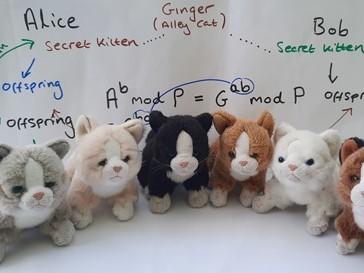
Teaching with Lego: using plastic bricks to encourage play and interaction in class
The transition from “delivery mode”, where students listen and make notes, to learning activities that require their active engagement and interaction can be challenging. But when I’ve introduced LEGO® to the class, these transitions have been different.
Instead of the room going quiet, with students shuffling uncomfortably, there’s a crash as LEGO bricks tumble on to tables and the floor. Students quickly rearrange themselves around the room and gather around piles of blocks. The atmosphere shifts as the students build and talk. The invitation to make and to play transforms how students collaborate and interact, share ideas and make connections, and experiment with applying and communicating their understanding.
Why bring Lego to class?
Active-learning design encourages teachers to focus on what students are doing in lectures, seminars and tutorials. It prompts thinking about how best to promote active and meaningful engagement with content and to develop skills. I’ve tried many methods to promote interaction, maintain focus and develop skills in cooperation, discussion, evaluation and reflection.
LEGO introduces an element of play and creates a relaxed atmosphere where students know it is OK to experiment. It facilitates different approaches to learning through play, making, storytelling, visual communication and collaboration.
LEGO can support active learning in multiple ways by:
-
encouraging students to engage with, reflect on and experiment with ideas and experiences
-
challenging the usual organisation, hierarchies and atmospheres of teaching spaces. Building and working collaboratively involves rearranging furniture, moving around and using floor space
-
shifting the students’ focus away from screens, notes and the lecturer
-
providing focus for cooperative learning as bricks reshape interactions between students. Discussions take place while students focus on playing and making with their hands. Debate, reflection and analysis are mediated by the bricks
-
allowing ideas to be communicated non-verbally through building and manipulation of bricks
-
providing a medium for story-making and storytelling
-
enabling creation that gives a focus to all-class discussions. In a variation of a “posters and galleries” method, creations are introduced and specific features are identified, moved and explained in ways that animate peer discussion.
Examples of teaching with LEGO
Workshop on transitioning to university: Students work in groups of four to build a LEGO model that represents their experiences during the first weeks of university. The activity is a playful opportunity for students to get to know one another and share experiences. The LEGO creations serve another purpose. Inspired by Carina Buckley of Solent University Southampton’s method of using LEGO to help students understand plagiarism and the importance of referencing, the models – and the act of smashing them – provide a memorable method for demonstrating the importance of being able to identify and attribute sources.
Making reading summaries in a lecture: In a course with 50 students, LEGO provides a focus for collaborative learning. In groups of five, students use LEGO bricks to produce a summary of a required reading. Making models becomes the focus for small-group discussion, as the students think with bricks, make connections, try things out and work cooperatively. The second part of the activity brings the whole class together to share and explain LEGO models. Students’ eagerness to share and the depth of understanding evident in their explanations is always striking.
Group dissertation supervision: Use LEGO to help students refine research design and promote peer feedback. Ask students to make something with LEGO to introduce their project to peers in group meetings of six to eight students. Explaining their creations challenges them to communicate their research in new ways, and focuses discussion, feedback and reflection.
Setting up learning activities
I was apprehensive the first few times that I took a box of LEGO to a lecture and worried that the activity wouldn’t make sense to students. Or that they’d feel patronised. Or they wouldn’t take me seriously.
Not everyone is into LEGO, but arriving at a lecture with a box of blocks creates a buzz of anticipation. Play on this energy, but explain why you’re using the LEGO to reassure students, emphasising the pedagogic importance of play and opportunities to experiment with ideas.
You’ll be amazed how a box of LEGO bricks can transform teaching spaces, animate student discussion and provide playful ways for students to apply, share and reflect on their understanding.
Dan Swanton is a senior lecturer in human geography in the School of GeoSciences at the University of Edinburgh.
Additional Links
Read more about Dan’s teaching with Lego on the University of Edinburgh Teaching Matters blog: Learning with Lego




